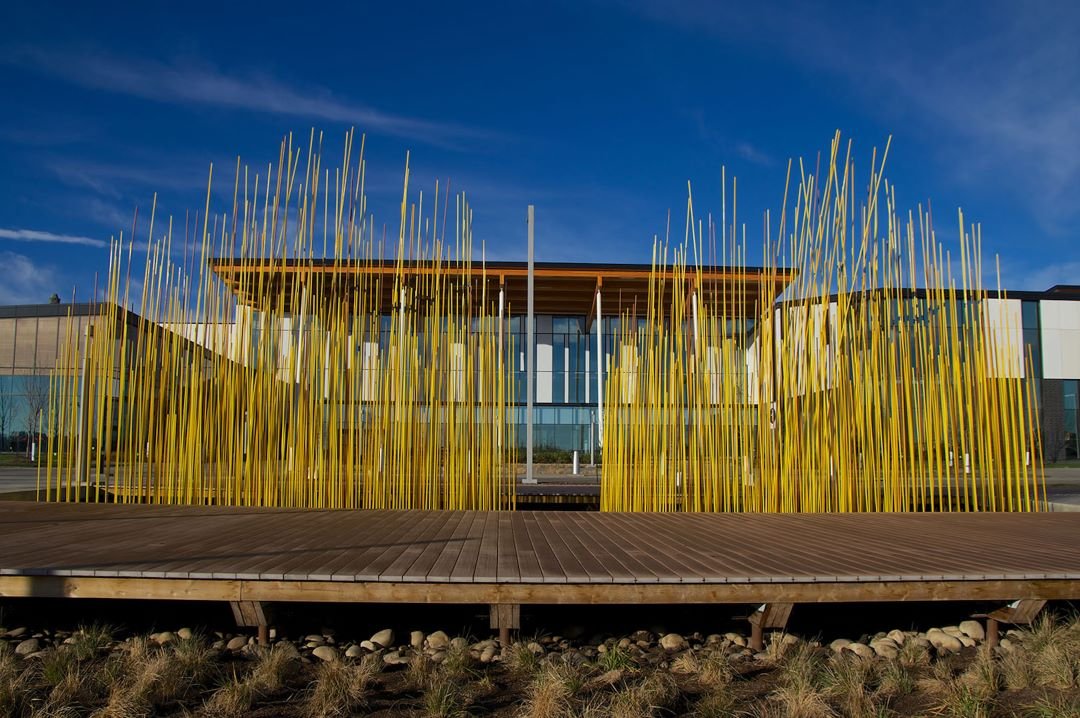Province wants control over Edmonton urban national park process
Mack Male photo
MLA Brandon Lunty says his private member’s bill, Bill 204 would amend the Municipal Government Act to prevent municipal councils from negotiating plans for national urban parks with the federal government without specified conditions from Alberta’s lieutenant-governor.
“What happens to Albertans’ green spaces is of paramount importance to the people of our province,” Lunty said. “While national urban parks may have some benefits, it’s critical for the province to have more oversight when it comes to their creation and development.”
The City of Edmonton said the province is participating “as an interested observer” in a working committee composed of the city, Parks Canada, and Métis and First Nations representatives.
Ward Dene Coun. Aaron Paquette said he has supported a national urban park since the idea was first proposed. He acknowledged the province has a legitimate claim to being stewards of the river valley. But, Paquette added, that claim is mostly “on paper,” as the city has taken stewardship responsibilities in practice.
“Why (is the province) suddenly interested when they haven’t been interested for so long? And why show that interest in the form of legislation that sort of comes out of nowhere, rather than picking up the phone or even walking the few blocks from the legislature to city hall?” https://edmonton.taproot.news/news/2024/02/29/explainer-the-battle-over-a-proposed-national-urban-park-in-edmonton
Sundew peatlands excellent at storing carbon
Sundew conservation land is in Westlock County, near Echo Lake family campground, and about 100 km from Edmonton. This 151-acre parcel, protected by Edmonton & Area Land Trust, is located near other protected areas and is prime habitat for threatened amphibian species such as the Canada toad and the Boreal toad.
Vegetation communities include a wet coniferous fen, mixed woods forest, mixed wood swamp, and shrubby fen. Sundew is home to many wildlife species, including lynx, moose, Boreal chickadees, elk, loons, Pileated woodpeckers, and many more. This is also great habitat for bears and other predator species.
In addition, the rich peatlands that this ecosystem supports are excellent at storing carbon. By protecting it, the ecological integrity of this unique habitat is maintained, thus allowing it to continue storing carbon: an increasingly important role as the climate changes. https://www.ealt.ca/sundew
Bank swallow, species at risk, has a colony in YEG river valley
Steven Sandor photo
The Bank Swallow is considered a species at risk. They collect in colonies and the birds drill holes in the cliff face for nests. They can transform a cliff into a natural apartment building. From one large group of nests on the shores of the North Saskatchewan River, they emerge and dive-bomb the water, searching for insects.
According to Birds Canada, the population of the Bank Swallow has declined by 98 per cent over the last 40 years. So, seeing a colony in action is something we should not take for granted. We should be celebrating the fact that these remarkable creatures have found sanctuary in our river valley.
The Bank Swallow colony is a prime example of Edmonton’s relationship with the river valley. We hike and bike next to it. We celebrate the parks that border it. We enjoy the views from the lookouts above. Yet very few of us get onto the river. We do not hear the thrumming of traffic as we float underneath a bridge. We do not think about the animals that make their homes in the river.
From our raft, we are treated to an air show. Birds fly around us, and there are splashes around our watercraft. And we are just a stone’s throw from downtown Edmonton. https://edifyedmonton.com/active/things-to-do-active/float-on-2/
Edmonton Cycle Club part of YEG’s golden age of bike racing
When the Edmonton Cycle Club burst onto the local racing scene in August 1935, they faced two entrenched opponents: the Golden Eagles and the Silver Hawks. Even still they made an impression. The new club’s first major outing came Labour Day.
In a race to Morinville, ECC member Donald Scotty McCaullum, who moonlighted as a Canadian Pacific Railway telegraph dispatcher, “outsped 35 other cyclists to win the 50 miles Edmonton-Morineville and return bicycle race.”
ECC began sponsoring its own races the following year, with their first major go taking place that Dominion Day. Up for grabs was the Eaton Trophy, “emblematic of the Alberta bike racing championship for the 25-mile distance.”
All the city’s biking clubs were hit hard by the Second World War and one-by-one they folded. In the post-war years some, like the Silver Hawks, returned. ECC was not so lucky. Ex-members and nostalgic fans failed twice, in 1946 and 1948, to revive the storied name. With that the ECC entered the realm of memory. https://www.forgottenedmonton.com/blog/edmonton-cycle-club
Untitled by Scott Sueme, Abbottsfield Recreation Centre
https://www.edmontonarts.ca/public-art/untitled-3
Comment or contribution
Please note that articles may not reflect the position of NSRVCS. River Valley News is meant to be a clearinghouse for the wide variety of opinions and ideas about Edmonton’s River Valley. Email river valley photos, event information, comments, or questions to nsrivervalley@gmail.com
















